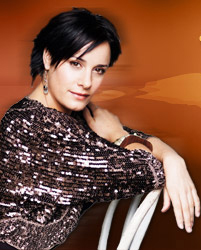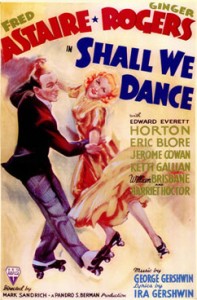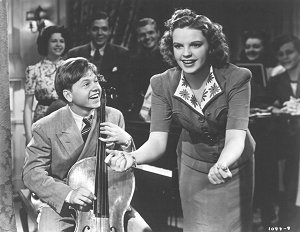The great masters of American songwriting created some of their finest works for romantic movie musicals, and many originally staged on Broadway made their way to the silver screen. Jerome Kern, George and Ira Gershwin, Irving Berlin, Cole Porter, Johnny Mercer and the very prolific Harry Warren were all major contributors to Hollywood's Golden Age of the 1930s.
Virtually all of these composers were influenced in their work to a greater or lesser degree by the jazz they heard all around them. And there are jazzy elements in the movie scores themselves, especially in the hot dance arrangements, some of which show the clear influence of the seminal recordings from the previous decade by jazz artists such as Louis Armstrong, Bix Beiderbecke and others. It's a fair statement that Fred Astaire's feet moved in a way unthinkable without jazz culture.
The influence flowed in the opposite direction, back in toward jazz itself. There is a long history of jazz musicians adopting these popular movie love songs as their own, transforming them with their hot swinging rhythm and "blue" tonality. Through the voice and trumpet playing of Louis Armstrong, for example, the pedestrian "You Are My Lucky Star"—composed by Nacio H. Brown and Arthur Freed for the movie musical Broadway Melody of 1936—morphs into something majestically syncopated and probably not envisioned by its creators.

Nina Ferro. Courtesy of the artist.
This week Riverwalk Jazz presents a Valentine's Day concert of classic love songs side by side with soundtrack clips from the films that made them popular hits. Singers Nina Ferro and Rebecca Kilgore join The Jim Cullum Jazz Band on stage at The Landing to perform love songs including: Irving Berlin's "Cheek to Cheek" from the 1935 RKO picture Top Hat starring Fred Astaire and Ginger Rogers.
.jpg)
Rebecca Kilgore. Courtesy of the artist.
"They Can't Take That Away From Me" was written by George and Ira Gershwin for the 1937 RKO picture, Shall We Dance?, also with Fred and Ginger. That year, the song was nominated for an Academy Award.
Cole Porter's "Night and Day" was introduced by Fred Astaire and Claire Luce in the 1932 stage musical The Gay Divorce. In the 1934 movie version, Fred's dance partner was Ginger Rogers.
"Time After Time" was composed in 1947 by Sammy Cahn and Jule Styne for the film It Happened in Brooklyn. In the film, it is sung by Frank Sinatra and reprised by Kathryn Grayson.
"Where or When" with words by Lorenz Hart and music by Richard Rodgers was introduced by Ray Heatherton and Mitzi Green in the1937 stage musical Babes in Arms. In 1939 Doug McPhail, Betty Jaynes and Judy Garland sang it in the movie version.
"Embraceable You" was composed by George and Ira Gershwin for the 1930 stage musical Girl Crazy, introduced by Ginger Rogers and Allan Kearns. In the 1943 movie version it was sung by Judy Garland.
Photo credit for Home Page: 1937 movie poster for Shall We Dance. Image courtesy wikimedia.
Text based on Riverwalk Jazz script by Margaret Moos Pick ©2012



